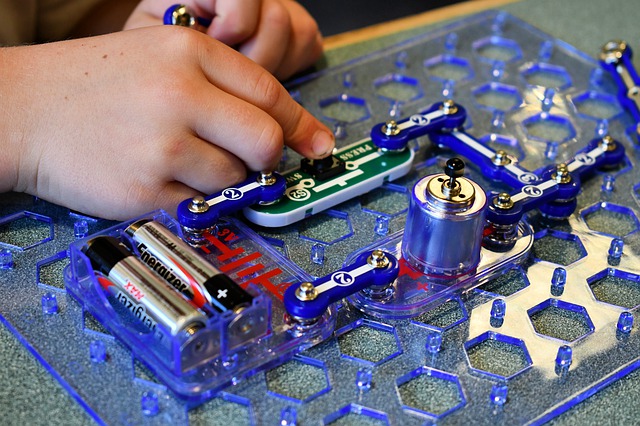Top 10 Learning Tools We Have Missed the Most
Dust off these hands-on learning tools for the return to in-person learning

If you have been lucky enough to be teaching in-person, you probably have become more familiar with sanitizing touch points than you ever wanted to be. If you have not been able to go back to in-person learning, your most engaging classroom tools are probably still locked up in a closet somewhere, pining for students to make them feel useful again.
Whatever the education situation is in your particular area of the world, it probably hasn’t been an ideal school year. With not enough resources to go around and teachers doing their best with less, students simply aren’t getting the same experience.
However, with advances in medicine and a new school year on the horizon, we thought it might be time to look forward to bringing our favorite tools back into the classroom. You might even find something new to help engage a fresh group of (hopefully in-person) students!
Top 10 Learning Tools We Have Missed the Most
This is probably the most-missed tool right now. The intuitive nature of the apps paired with the fun, engaging activities make it invaluable. Unfortunately, the previous cardboard-based pieces made sanitizing a nightmare, but Osmo took the feedback and ran with it. Almost all pieces for any of the kits are now plastic, and cleaning is much easier. Osmo is perfect for a station-rotation model or individual work.
2. Qball for Quick Formative Assessment!
With the focus being on aerosolized particles as the spreading mechanism for the virus-that-shall-not-be-named, a shared microphone may not have been the best idea. Which took Qball --a throwable, kickable, rollable wireless microphone that allows students to have their voice heard -- out of the rotation. Getting Qball out of the closet is going to open up such a large world of questioning for teachers, and students will love the idea of tossing a microphone around the room.
Tech & Learning Newsletter
Tools and ideas to transform education. Sign up below.
3. Keyboards, Sweet Keyboards!
If you are lucky enough to work in a district that is 1:1 with laptops of some sort, you may not understand this one. In some districts, keyboards are a hot commodity, and those that use tablets as a 1:1 device will know the hardship of trying to share. The on-screen keyboard simply doesn’t cut it sometimes, and an external keyboard becomes necessary. Not to mention some kind of stylus or writing utensil. Getting these back will greatly increase student productivity while decreasing teacher workload.
Have you ever tried to teach coding (or anything) to a five-year-old without something concrete to show them? It is not pretty. Sphero is a handy little ball of fun that helps students of all ages learn about coding, machine learning, following directions, and plenty more. The only problem is that there is almost no way to have a complete classroom set for every classroom, which means sharing. Which means touching, tapping on screens, germs, etc. You see where this is going? It will be a grand day when the Spheros that have been tucked away in dark corners can be set free again.
5. Go Exploring with Google Expeditions Again!
If schools had unlimited money, time, and travel, maybe a tool such as Google Expeditions wouldn’t be so popular? Until that day comes, we will have to settle for the awe-struck “Wow!” and “Look at that!” heard when an expedition is underway. In order to truly feel as if you are on-site at the Colosseum, ancient Aztec ruins, or the South Pole, students usually have to put something up to or on their face, which is usually only available in school buildings. For your first Google Expeditions experience back in the classroom, check out the Great Coral Reef, and be ready for a whole classroom of “Wow!” and “Look at that!”
6. You’re Never Too Old for Legos!
Sure, we all know Legos. The thing to know now is how they have adapted in a rapidly changing educational environment. Want to build and code a robot? Check! Want to dive deeper into coding? Check! The only thing these Lego Coding Kits can’t do is clone themselves, which means in-school (and sanitized) use only. Just make sure you have scheduled yourself enough time because you won’t be pulling your students away from these amazing kits any time soon!
7. Go Screen-Free with Ozobot!
Some of the reasons we have missed Ozobot: color-changing lights, coding with markers, and of course, dancing robots! In truth, Ozobot does have a classroom kit available. No longer do we have to watch our Ozobots collect dust while dreaming of the Oregon Trail, Float Parade, or Puzzle Solving lessons that could have been.
8. Ditch the Clay for Squishy Circuits!
If you have ever thought that a classroom just needs a more electric atmosphere, you have found your match! Students love creating with Squishy Circuits, and teachers love watching them discover the ins and outs of electricity through authentic experience. Students need to be able to work in groups, with direct teacher feedback, for Squishy Circuits to be successful in an educational environment. The student engagement in the room will be . . . electrifying! (Sorry, couldn’t resist!)
9. Get Literal with a 3D Printer!
Few things excite a person more than seeing their innovating or new ideas come to life in front of their eyes. That fact alone is probably why 3D printers have worked their way into schools across the nation. Printer beds have sat empty for the past year, while teachers struggled to figure out how to get Jimmy’s 3D model from the creation software to the printer. Stress all around. We can’t wait for that magical day when everyone can huddle around the Flashforge, Dremel, MakerBot, or whichever 3D Printer of choice to watch a model emerge in .04mm per layer.
10. Makey Makey Something Amazing!
Featuring a huge variety of items to invent with, Makey Makey Kits are a must-use in any classroom. Students can learn about electricity, coding, and even game design. Imagine being able to add the option of “Design a game using Makey Makey” to your menu board of assessment choices.
This year has been tough, but educators and students are tougher. There will be growth and adaptation that comes from this, as well as new routines, new ideas, and new approaches to explore. However, some things will not change. Classroom tools will always be necessary, and good ones will always rise to the top.
Hopefully someday soon, all of these amazing tools will be back in rotation in classrooms around the world. Until then, stay safe, do what you can, and know that these tools will be ready when students are.
Nikki Schafer
